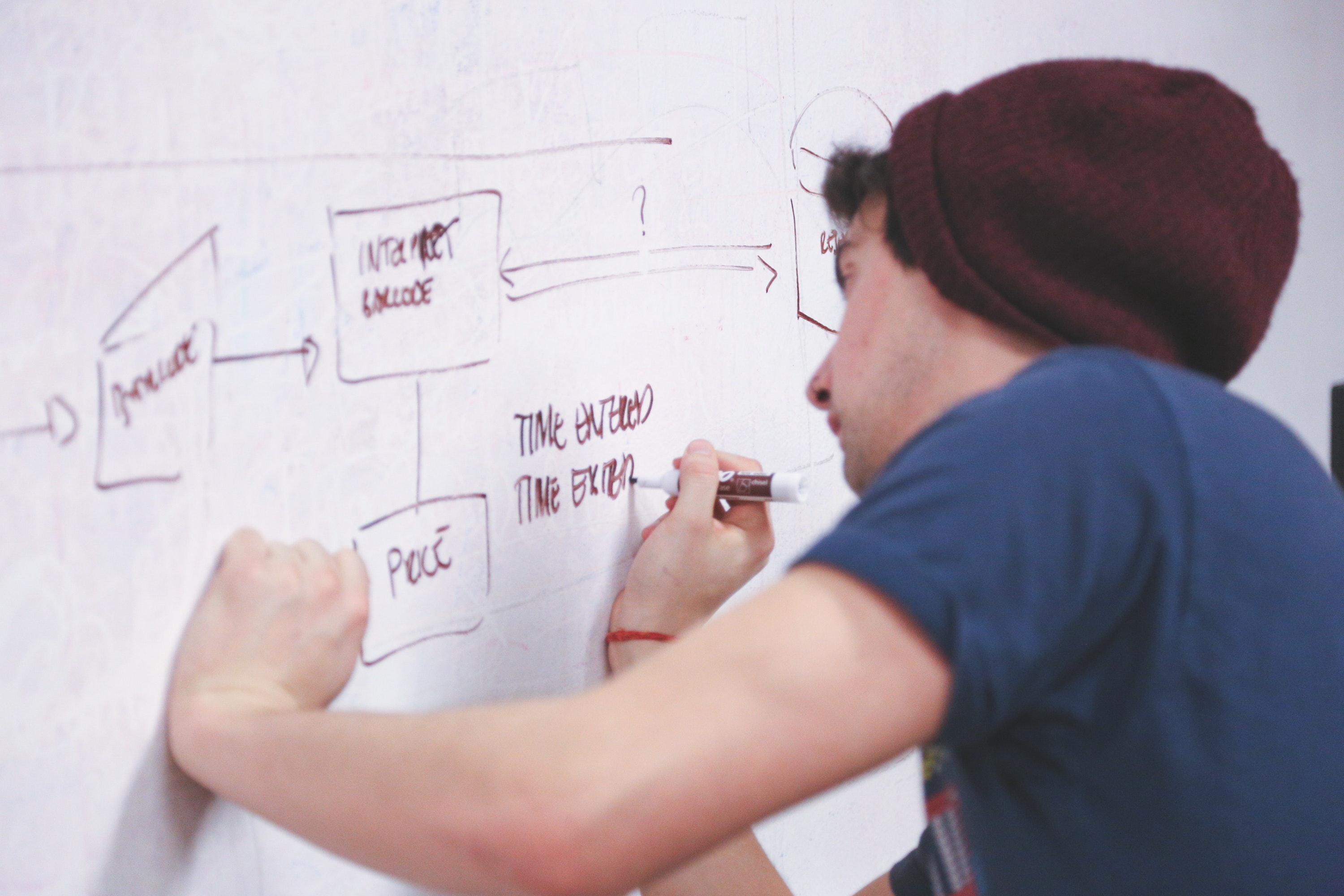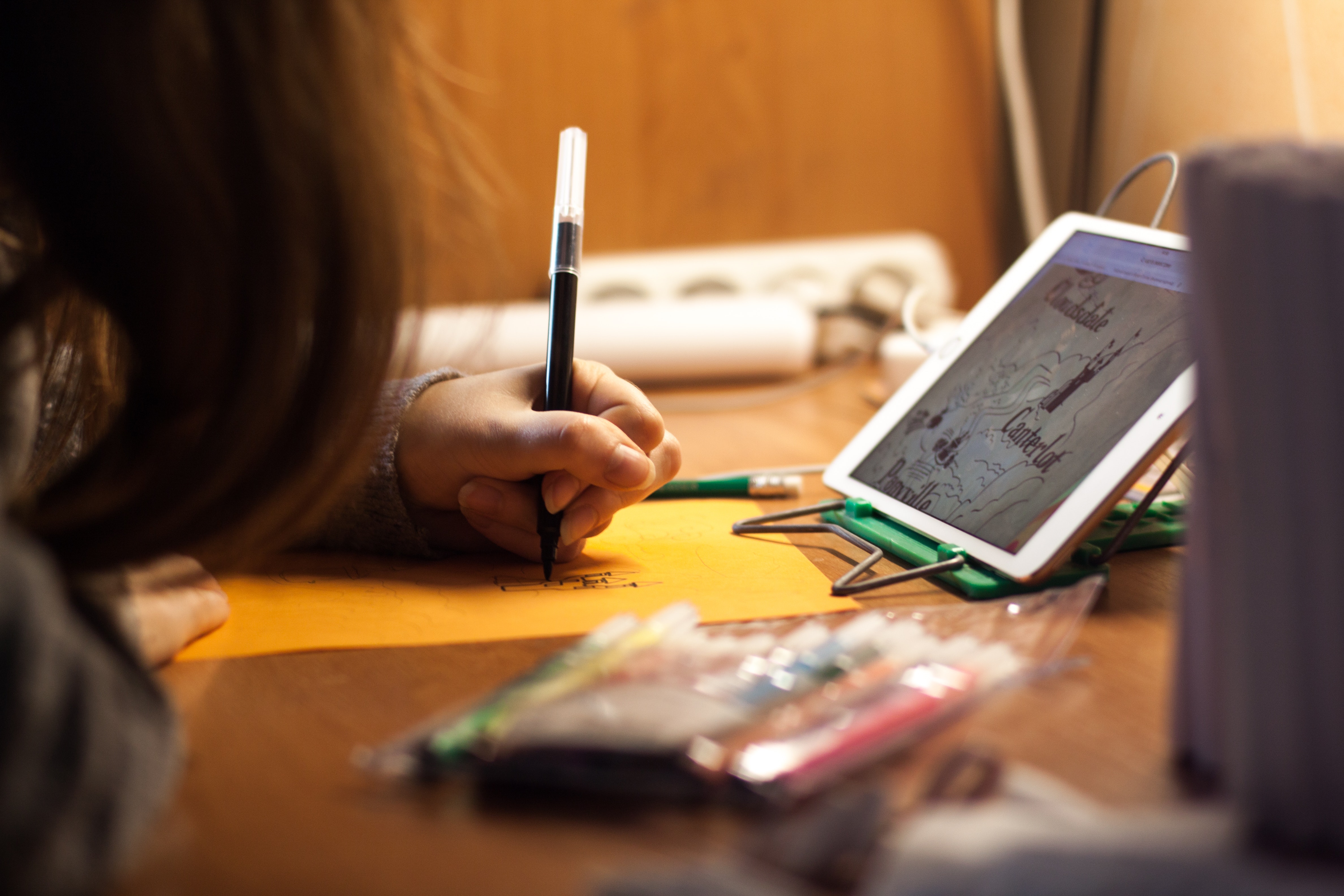7 steps to lead a creative learning project
April 24, 2018

Creativity plays such a big part in our everyday life, as creative problem solving is behind of every innovation and self-expression can be seen as a key to happiness. Using educational technology for creative purposes is one of the best ways of benefiting from EdTech it in schools.
It’s easy to get students producing music, video or stories, using technology. What's more challenging is to ensure the educational value of these activities. In the best case scenario, students don’t only learn about how to make videos or music, but also adopt design thinking principles and build a routine for innovation. This requires a well-thought structure for creative projects.
To spark creativity, people need boundaries for the creative tasks. A teacher can set the boundaries through proper assignments and make the creative process goal oriented. The goal-oriented process can be divided into seven phases, which help to lead creative learning projects successfully. This linear model was formed as part of my EdTech research and development work at SongHi, where we created a music application for schools.
1. The briefing: Goals are set for the creative piece
The teacher gives meaning to the work that is going to be accomplished: What is going to be created and why?
The creative process begins with outlining the contents of the piece. The teacher sets a creative problem that the students have to solve. The aim for setting the problem is to turn creative process into a goal-oriented task and give guidelines for the students’ creative thinking. Giving guidelines helps the students to evaluate the content and set their own goals for it. A good briefing gives meaning to the piece, gives a reason for creating the piece or for why the piece is being created and sets a timetable for completing the work.
The following is an example of what the briefing might be: Create a cheerful and an energetic “Happy Mothers’ Day video” for a Mother’s Day gift.
After receiving the previous briefing the students understand what the aim of the video creation is and what is attempted to achieve with the video (making mom happy). The goal for this assignment is cheerfulness and exuberance. Additionally, the mother should like the video. Since Mother’s Day sets a deadline for the work, the timetable for the task can be easily defined.
2. References
Searching for reference will aid in perceiving what kind of piece is going to be created.
An easy way to start generating ideas is to watch other similar pieces. Since the assignment was to create a “greeting video”, the students can start developing their own ideas by watching greeting videos from Youtube for example. As they are examining references, the students can take note of, for example, what elements are usually used in videos, how long are they, and what kind elements make them feel cheerful and energetic.
Another way to use references as a guideline is for the students to choose a few reference pieces they feel are good and let the teacher to watch them. The teacher can give feedback to the students about which of the videos seem like something the students might start to create for themselves. By searching for references the students are able to form an image in their minds about what they are trying to achieve through the video creation. Therefore references help point the way and define what the final outcome should approximately look like.
3. Information gathering
Gathering all the necessary information for creating the outlined piece.
After the students have formed an idea about the application of the piece and what it should approximately look like, they start to gather all the information that is needed in creating the planned piece.
In the example assignment, the students should know what elements they can use to make the outcome cheerful (sound design, images, humor in the script etc.). This is where understanding the terms, comedy, irony and sarcasm and learning how to implement these come into play. Students can search for information through using internet search engines or by asking from the teacher. Since learning how to gather information is an essential part of the creative learning project, the teacher would do well to design assignments according to the information that is needed to carry out the assignment and what kind of information sources the students have access to.
4. Production (demo)

Learning by doing. Learning as peers is preferred - the teacher becomes a mentor.
In the fourth phase of the creative process, we get to the heart of the matter – producing our own videos. Students certainly can still keep looking for new reference pieces and gather more information in the production phase, but the most important part is creating a short movie/video.
If the teacher’s role in the previous phases has been to lead and guide the students, now it is time for them to take a step back and switch their role from teacher to mentor. As a mentor, the teacher should encourage the students towards goal-oriented video creation by watching their unfinished pieces and urging them also to actively watch each other’s pieces. The audience’s reaction to a piece is a powerful motivator in creative work, and if the teacher encourages students to share their works in progress, it will also motivate the students to work their hardest from the beginning.
When it comes to questions about using the video editing software, like finding certain features, the teacher should favor peer-oriented learning. If a student has a question about the software, the teacher should first direct the question towards the other students. The main reason for this is that students are often very skilled in the use of technology and utilizing their know-how can make work run smoother. It is sensible to practice peer-oriented learning since showing this level of trust can bolster the students’ self-confidence and create positive team spirit.
5. Feedback
Using Feedback allows other opinions to be heard. Does the piece follow the assignment's outline? Does something need to be fixed?
Feedback is an important part of any process or project. Every time something new is being created, it is a good idea to present the work to others at some point for feedback. People that are not part of the development of the work can often see things from different perspectives and offer ideas and suggestions that the creator might not have thought of.
Good feedback is not always positive. It can also be critical, but it should always be constructive. (Just saying “that sucked” does not help anyone and will only upset, so that and similar comments should be left out completely.)
It is good to teach the “hamburger model” when students start giving feedback: first, you say something positive, then you give suggestions for improvement and then close by saying something positive again.
Ways of giving feedback:
Feedback from the teacher: The teacher evaluates the work and gives feedback according to the assignment.
Feedback from peers: The other students give feedback about the work. The students can, for example, be divided into feedback pairs that comment on each other’s work at certain points in the project.
Brainstorming: A bigger group goes through the work and everyone can give feedback if they wish. For example, the feedback can be written on pieces of paper that are collected and given to the video creator. Each feedback should consist of a positive comment and a suggestion for improvement. The creator goes through the collected feedback after brainstorming and considers suggestions that could be applied during further work.
6. Further work
Based on the feedback, possible adjustments are made to the piece and the piece is finalized for publication.
The feedback is read before doing further work on the video.
Different options should be experimented on based on the feedback received. Might one of the new versions be better? It should be noted that the video creator always has the final say on how feedback is implemented. If changes are made, the work can be played for others a second time to see whether they would give different feedback.
7. Publication

When the piece is done, it will be published according to the plan made earlier.
Different release channels, ethical standpoints, and marketing need to be considered prior to publishing.
One of the key motivators when making a creative piece is the audience’s reactions to the outcome. When the video has been made, it is time to publish it. It should be remembered that you can polish the work endlessly, but at some point, you will just have to decide that the piece is ready. This is why a timetable and a deadline that you will adhere to should be set at the beginning of the project.
In the publishing phase, it would be good to consider again who the piece is for and where it is supposed to be published. Is the video just for me, for a project for the whole class or maybe even for a wider audience? When the publication decision has been made, it is still important to consider marketing. Who is the video aimed at and what would be the best way to reach its target audience? Where should the work be advertised and how should the marketing be realized?
When making any piece of work public, it is important to ask permission from everybody that took part in the production. This is especially important if the work is published through social media or if the finished work contains images or video of people.
Written by Olli Vallo, Co-Founder & Head of Education at Education Alliance Finland


